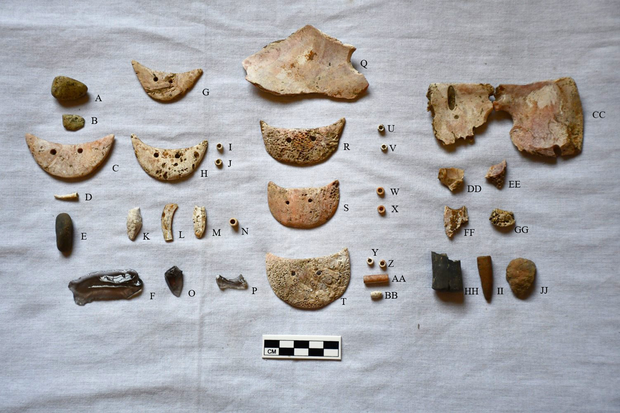The remains of a pregnant woman, showing signs of “sacrifices as tradition,” the findings of Ecuador, archaeologists said

A pregnant woman who was believed to have more than a thousand years ago in the coastal Ecuador region may have been part of a culture or punishment, according to archaeologists held his body in 2022.
In the study of the last month with Cambridge University Press in the name of the US Education Association, called AD 771 and AD 953. He was 20 to 20 years during his death. , and his hands and a leg left was taken away during his death, according to researchers.
Kathryn Killacky / Cambridge University Press / Society for Archean Archaology
Archaeologists discovered that his burial is important because he is pregnant at that time. The bodies of a young woman illustrates the cranial crack and cutting marks on his bones in his hands, which led to commitment to the possibility of sacrificing.
“Perimortem Trackuuma, including cranial crack and curmark in their hands, manual removal and left leg.
Although the sacrifices of the Coastal Ecuador is rare, the body’s shape and lost legs suggest the importance of culture, research.
Her eyes are covered with two shells and stabbed clams. There was a great green stone near several ceramic pieces in his foreheads, according to the study. Spahlas Mascaras set up sphubis, or mollusk shells, found in the body.
He was buried with spondylus in pregnancy and beads, known as Chaquira, from various cultures and times.
Cambridge University Press / Society for American Archaology
The woman is believed to be part of the Manteño coast, who lived on the Ecuadorian coast and survived the sea, but the coverage of the eye, the regular researchers said. The green stone representing the communication between the deaths between Valdivity funerals, a different group of coastal coasts to carefully gather inñño by about 2,000 years, according to a professional. Mascaras were also commonly linked to Valdivianians.
“Collect so many arts required for anger before installation on this funeral,” the survey said. “The interpretation of this funeral must eventually consider this repeated and tying in the past to understand the reasons for this large funeral.”
The funeral and contributed to the burns of Thoracic cavity, said investigators. However, such customs have been found in the long run between Ad 991-1025, which will show that the grave of a woman is also revised and may be used for some cultures.
Source link




